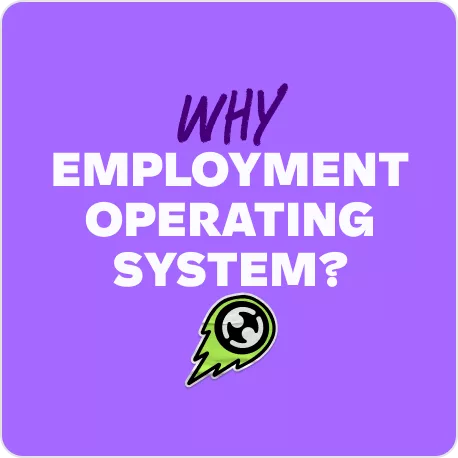What is Structured Workplace Learning (SWL)? A Comprehensive Guide

Contents
Structured workplace learning isn’t just about ticking boxes or sitting through dull training sessions. It’s about growing, thriving, and staying sharp in an ever-changing world of work.
From hands-on experience and creative workshops to bite-sized digital courses and mentoring chats over coffee, learning on the job can be dynamic and empowering. Employees can level up their skills, tackle new challenges with confidence, and even discover hidden talents.
In today’s fast-paced workplace, learning isn’t a one-time event. It’s an exciting, ongoing adventure. But what is structured workplace learning, and how can you set your team up for success?
What is Structured Workplace Learning?
Structured workplace learning (SWL) describes an organisation’s employee training system. Specifically, it’s about creating a formal and predefined pathway of learning modules that equip your staff with the skills and knowledge they need to do their jobs.
SWL differs from more casual or ad-hoc training—its inherent structure provides more measurable and consistent outcomes. It’s especially vital for businesses that require skilled and experienced employees (such as for plumbing, electrical work, carpentry, engineering, law, medicine, and many more) and need to meet industry standards and compliance.
Having a structured workplace learning scheme in place helps to build a more skilled and motivated workforce, keeping your business competitive and prepared for future challenges.
The benefits of structured workplace learning for UK businesses
Having a structured workplace learning scheme brings a wide range of benefits for you and your employees.
For employees
- Skill development – The primary benefit of SWL is that employees are given the opportunity to acquire new skills and knowledge, as well as to hone and enhance existing ones.
- Career opportunities – By enhancing their skills, employees are opening themselves up to future opportunities for career progression.
- Job satisfaction – Knowing an employer is willing to provide the time and tools to advance their skills, makes employees feel valued and supported.
- Collaboration and communication – Working through training with other employees helps to foster relationships and collaboration within and between teams.
For employers
- Enhanced employee skillset – Upskilling your workforce means greater productivity and efficiency, while also encouraging innovation. A skilled, engaged team leads to more creativity and new ideas.
- Better employee retention – Employees are more likely to stay in a role that provides them with room to grow and develop their skills, helping them feel supported and appreciated.
- Improved compliance – A knowledgeable and experienced workforce helps to ensure compliance with industry regulations and standards, contributing to your business’s overall quality and reliability.
- Improved health and safety – Structured learning is vital for creating a safe work environment—something that can only be achieved when everyone understands and follows established working practices.
- Improved performance – Structured workplace learning is linked to performance management, and can be integrated into performance cycles and development plans. It plays a big part in outlining role expectations, promotion criteria and talent pools.
Common challenges (and how to overcome them)
Implementing a structured workplace learning program isn’t always smooth sailing. Recognising potential hurdles early on helps you avoid setbacks and build a training system that truly works.
Limited time and resources
Training takes time, and pulling employees away from their daily responsibilities can feel costly. The solution? Start small. Focus on high-impact modules and integrate learning into day-to-day workflows using bite-sized formats.
Low employee engagement
Not everyone is excited about training, especially if it feels irrelevant. Personalise learning paths and make use of varied formats like video, quizzes, and gamification to boost motivation.
Lack of leadership buy-in
Without support from management, structured learning initiatives often lose momentum. Ensure leaders understand the business value and tie training outcomes to strategic goals.
How to structure your workplace learning program for success
A successfully structured workplace learning program starts with a solid plan. This involves figuring out what you want to achieve and having a clear vision of how to get there. Well planned learning systems are much more likely to have a positive and lasting impact on your business.
Identify your requirements and objectives
Whether it’s for specific teams or the whole organisation, begin by assessing what your business training needs. If you’re starting from scratch, this will take some thorough investigation, and should involve speaking to every level of employee to identify areas for improvement. That way you’ll spot skill gaps or opportunities for new development.
Some industries already have specific regulations and compliance standards that must be met–these should be incorporated from the beginning. Beyond that, think of what problems you want to solve or what business objectives you want to achieve with your structured workplace learning program.
Create a training plan
Once you know what you’re aiming for, it’s time to plan how you’ll get there. This involves everything from the approach to learning to the content that’s created, and how employees will experience the training.
This could be through workshops, online modules, gamified learning, or the use of mentorship. Avoid a one-size-fits-all method, and think about what will be the most effective and engaging way to train your team.
Implement structured learning
Implementing your training plan means creating a timeline that fits with your operational needs. Naturally you can’t just take everyone off their roles and devote all their time to training. So your plan needs to minimise disruption while still achieving positive outcomes in a realistic timeframe.
For a small business with less than 50 employees, it’s estimated to take around 4-6 weeks to implement, whereas for larger businesses it could take anywhere from 2-12 months. You also need to come up with ways to measure the success of your training scheme. This could be in the shape of surveys, quizzes or interactive games.
Evaluate and evolve
Any effective learning and development programme should be reviewed regularly to assess what’s working and what needs improvement. Compare your outcomes against your original objectives to see whether your training is delivering the desired results. If certain modules consistently fail to engage or inform, they may need to be redesigned or replaced.
Your structured workplace learning plan should evolve alongside your business. Retire outdated training and introduce new content to reflect changing skills needs, compliance requirements, or strategic goals.
We also recommend you use learning data to inform your decisions. This might include training completion rates, learner feedback via post-training surveys, and evidence of how new skills are being applied in the workplace. These insights can help you evaluate programme effectiveness, monitor learner progress, and assess return on investment.
Involve stakeholders at every level — from business leaders and HR teams to line managers and employees — in ongoing evaluation. Their insights will help you refine the programme and ensure it continues to meet the needs of your people and your organisation.
How to engage employees in your structured learning program
Setting up a comprehensive training program is one thing, but getting employees onboard with it is another challenge. The thought of learning, tests and compliance can be intimidating for many people, so making your structured learning scheme accessible and perhaps even enjoyable will make a big difference.
Make use of diverse learning formats
Reading through endless documentation can quickly become tedious, which reduces the amount of information that is retained. People learn in different ways so try different approaches with your training material.
Recognise internal success stories
Highlight employees gaining qualifications, promotions, or anything worthy of celebration, especially good old fashioned hard work. Showing recognition reinforces your commitment to training your employees, and advancing their roles and careers.
Related Resources
-
 Read more: What is Structured Workplace Learning (SWL)? A Comprehensive Guide
Read more: What is Structured Workplace Learning (SWL)? A Comprehensive GuideWhat is Structured Workplace Learning (SWL)? A Comprehensive Guide
Published Updated Contents Structured workplace learning isn’t just about ticking boxes or sitting through dull training sessions. It’s about growing,…
-
 Read more: EOFY Important Dates Calendar
Read more: EOFY Important Dates CalendarEOFY Important Dates Calendar
Gearing up for EOFY? To help you prepare, we’ve put together a calendar of important dates to support you through…
-
 Read more: Product Update: April 2025
Read more: Product Update: April 2025Product Update: April 2025
Follow our April 2025 product update as we share all of the latest and greatest features we’ve released over the…









